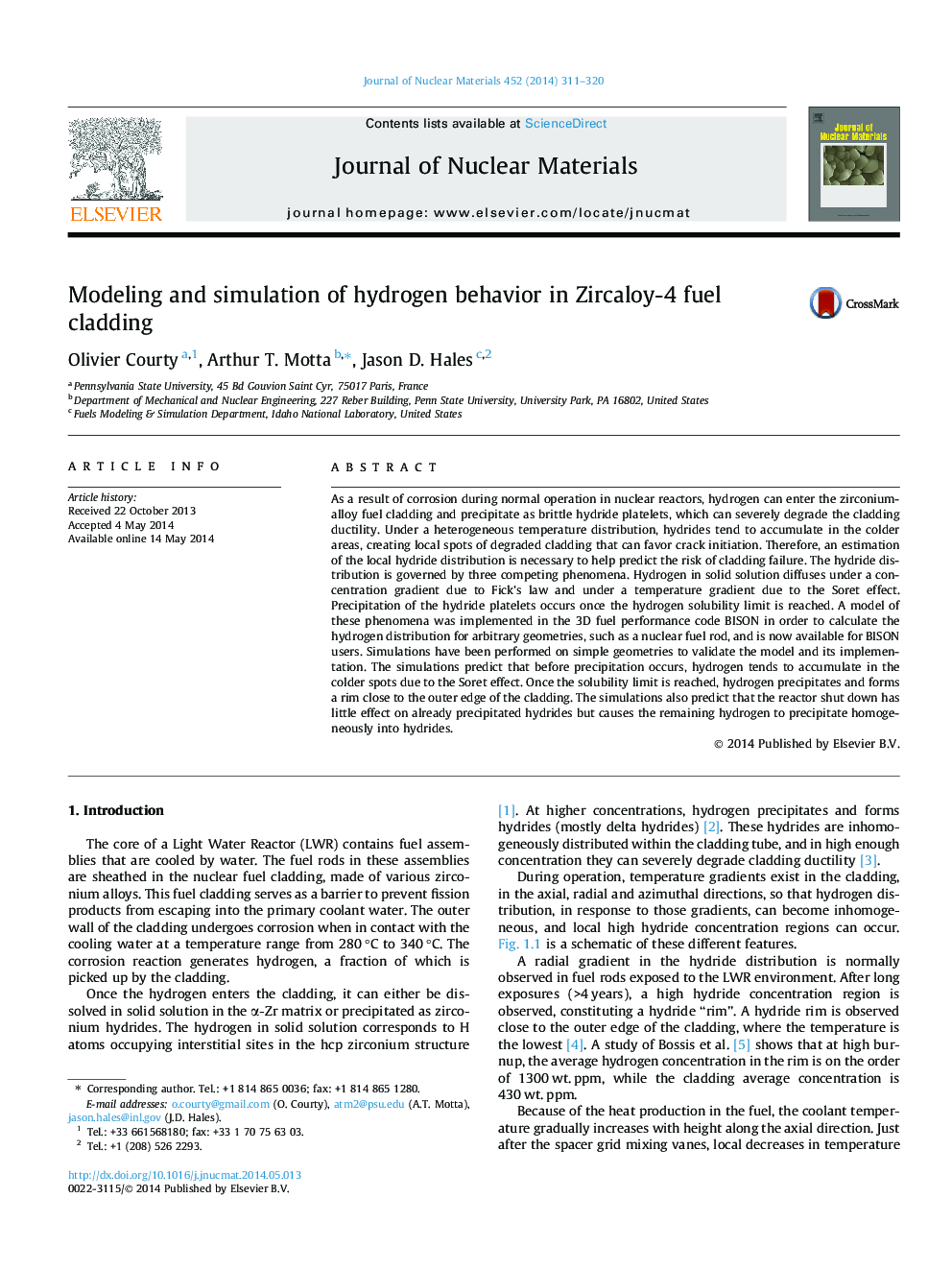| کد مقاله | کد نشریه | سال انتشار | مقاله انگلیسی | نسخه تمام متن |
|---|---|---|---|---|
| 1565114 | 1514193 | 2014 | 10 صفحه PDF | دانلود رایگان |

As a result of corrosion during normal operation in nuclear reactors, hydrogen can enter the zirconium-alloy fuel cladding and precipitate as brittle hydride platelets, which can severely degrade the cladding ductility. Under a heterogeneous temperature distribution, hydrides tend to accumulate in the colder areas, creating local spots of degraded cladding that can favor crack initiation. Therefore, an estimation of the local hydride distribution is necessary to help predict the risk of cladding failure. The hydride distribution is governed by three competing phenomena. Hydrogen in solid solution diffuses under a concentration gradient due to Fick’s law and under a temperature gradient due to the Soret effect. Precipitation of the hydride platelets occurs once the hydrogen solubility limit is reached. A model of these phenomena was implemented in the 3D fuel performance code BISON in order to calculate the hydrogen distribution for arbitrary geometries, such as a nuclear fuel rod, and is now available for BISON users. Simulations have been performed on simple geometries to validate the model and its implementation. The simulations predict that before precipitation occurs, hydrogen tends to accumulate in the colder spots due to the Soret effect. Once the solubility limit is reached, hydrogen precipitates and forms a rim close to the outer edge of the cladding. The simulations also predict that the reactor shut down has little effect on already precipitated hydrides but causes the remaining hydrogen to precipitate homogeneously into hydrides.
Journal: Journal of Nuclear Materials - Volume 452, Issues 1–3, September 2014, Pages 311–320